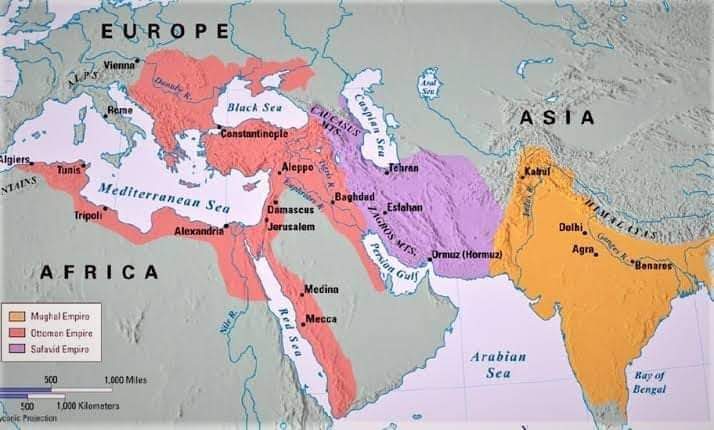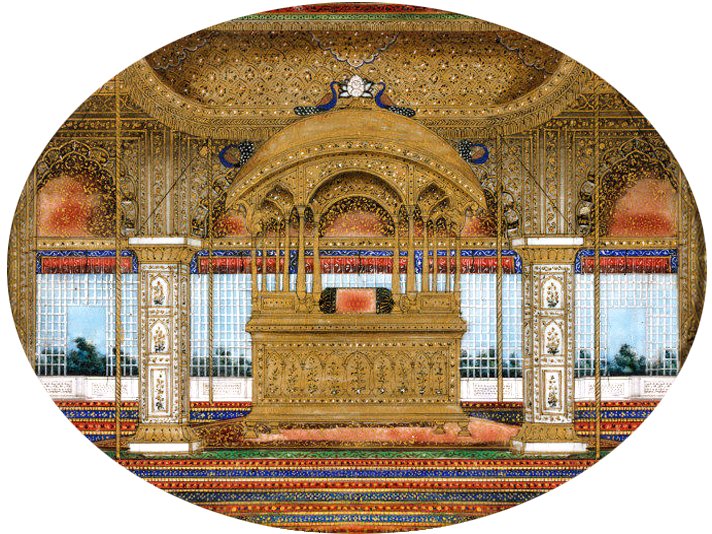
Pakistan faced it's first invasion around 800 BC when Queen Semiramis of Assyrian Empire invaded the country of Indus.
At that time Stabrobates was the King of Indos (Pakistan) who successfully repelled this invasion while Assyria was the most powerful state of world.
(1/15)
At that time Stabrobates was the King of Indos (Pakistan) who successfully repelled this invasion while Assyria was the most powerful state of world.
(1/15)

According to the accounts of ancient Greek historians Diodorus and Ctesias, the Queen Semiramis “resolved to subjugate the Indos/Pakistanis on hearing that they were the most numerous of all nations, and possessed the largest and most beautiful country in the world”.
(2/15)
(2/15)

To invade Pakistan, two years preparations were made throughout Assyrian Empire - modern day Iraq, Egypt, Turkey and Central Asia. During preparations she realized that her lack of war elephants can cause serious disaster. So she made a very unique plan to avoid this.
(3/15)
(3/15)

She ordered to cover 100,000 camels with the sewn skins of black oxen and fitted with fake movable trunks in order to trick the people of Indos/Pakistan into believing that she had a large elephant corps as well.
(4/15)
(4/15)

The workmen who were building these puppets for her pursued their work in a wall enclosure with closely guarded gates. She did this so that no one outside could see what was happening, and also no rumour of these transactions could leaked aboard to the Stabrobates.
(5/15)
(5/15)

Besides formation of these beasts, 2000 boats were also built for crossing the Indus river. After preparations of two years, in the third year she summoned his army into Bactria from all sides.
According to the accounts of Diodorus and Ctesias,
(6/15)
According to the accounts of Diodorus and Ctesias,
(6/15)

she invaded the Pakistan with 3,000,000 foot soldiers, 500,000 horsemen and 100,000 chariots along with 100,000 camels with covering of elephants. It was probably the largest military invasion on any country in ancient world.
(7/15)
(7/15)

During all of this when King Stabrobates learned about the magnitude of Assyrian army, he ordered his kingdom for preparations and gathered army greater than Assyrians. He made special departments for weapon production, maintenance of supply chain, elephants and boats.
(8/15)
(8/15)

After completion of preparations, he sent messengers to Queen and accused her of stirring up a war without any provocation. In letter he calling the gods to witness and promised a shameful end for Semiramis by crucifying her. However she ignored the all warnings.
(9/15)
(9/15)

Initially Assyrians were winning, all boats of Indos were sunk and many became prisoners. By seeing this Stabrobates pretended to flight but actually he led his army back from the Indus; in reality he wished to induce the enemy to cross the Indus.
(10/15)
(10/15)

Now in second turn he successfully launched attack on Semiramis and succeeded to crush Assyrians. 2/3 army of invaders was slaughtered, their Queen was injured by the arrow of Stabrobates and eventually Queen left the battlefield and never returned.
(11/15)
(11/15)

In this way the first attack on the lands of Pakistan was crushed by the brave sons of Indus Valley.
But here there is another twist in the story and that is according to some 20th century historions, Queen Semiramis was mythical figure not the historical.
(12/15)
But here there is another twist in the story and that is according to some 20th century historions, Queen Semiramis was mythical figure not the historical.
(12/15)

However there is division of historions on this matter. Some argue that the Queen Semiramis was actually historical figure in the form Queen Shammuramat.
(13/15)
(13/15)

Actually we have some evidences in support of this theory including some Assyrian records which indicate that Semiramis was Greek reflection of Shammuramat. Or may be Semiramis was the royal title of Queen Shammuramat as the regent of her son Adad-nirari III.
(14/15)
(14/15)

However whatever the matter is; either this event is historical or semi-legendery, we can assume one thing from this event is that to invade Pakistan was considered a sign of pride and power in ancient times. It was like a dream even for most powerful states.
(15/15)
(15/15)

• • •
Missing some Tweet in this thread? You can try to
force a refresh









